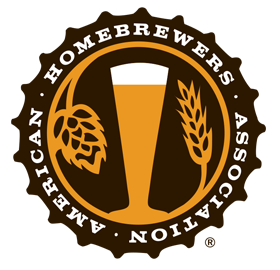
This is one of the official 2023 Learn To Homebrew Day beer recipes, download a PDF of the recipe. Join the Learn to Homebrew Day celebration every year on the first Saturday in November (Nov. 4, 2023).
* * *
The following recipe was originally featured in the article “Small Batch Brewing” by Dan Jablow (Jan/Feb 2023 Zymurgy magazine).
Here’s the full recipe for my SMaSH ale, which I still brew frequently to experiment with new hops, yeast, malt, or brewing processes. I typically use a two-row pale malt.
This recipe is designed with the novice brewer in mind, so I’ve skipped some key steps here, including water chemistry adjustments and gravity readings. These can certainly help you make great beer, but a good understanding of techniques, process, and gaining comfort with your brewing setup are much more important as you get started.
Bitterness will vary with the hops you select. Consider starting with a variety that offers moderate alpha acids, such as Cascade, to establish a baseline. The next time you brew, you can try a higher- or lower-alpha hop for more or less bitterness.
This is one of the official 2023 Learn To Homebrew Day beer recipes, download a PDF of the recipe. Join the Learn to Homebrew Day celebration every year on the first Saturday in November (Nov. 4, 2023).
* * *
The following recipe was originally featured in the article “Small Batch Brewing” by Dan Jablow (Jan/Feb 2023 Zymurgy magazine).
Here’s the full recipe for my SMaSH ale, which I still brew frequently to experiment with new hops, yeast, malt, or brewing processes. I typically use a two-row pale malt.
This recipe is designed with the novice brewer in mind, so I’ve skipped some key steps here, including water chemistry adjustments and gravity readings. These can certainly help you make great beer, but a good understanding of techniques, process, and gaining comfort with your brewing setup are much more important as you get started.
Bitterness will vary with the hops you select. Consider starting with a variety that offers moderate alpha acids, such as Cascade, to establish a baseline. The next time you brew, you can try a higher- or lower-alpha hop for more or less bitterness.
Ingredients:
- MALT
- 2.25 lb. (1.02 kg) milled base malt of your choice
- HOPS
- 0.5 oz. (14 g) any hop of your choice @ 60 min
- 0.25 oz. (7 g) the same hop @ 15 min
- 0.25 oz. (7 g) the same hop @ 0 min
- YEAST
- Any variety of yeast will work. I recommend starting with a dry yeast, as it is easy to measure the amount required for a 1-gallon batch. Fermentis and Lallemand both make excellent dry yeasts in 11-gram packets, enough to brew a typical 5-gallon batch. Since we’re only brewing a single gallon, we need one-fifth of that packet, or 2.2 grams. Having the jeweler’s scale here is helpful. Tightly package up any remaining yeast and store in the refrigerator for future use.
- WATER
- 1 gal. (3.8 L) for mashing
- 0.75 gal (2.8 L) for sparging
Specifications:
Yield: 1 US gal. (3.8 L)
Original Gravity: 1.055-1.065
Final Gravity: varies with yeast selection
ABV: varies with yeast selection
IBU: varies with hop selection
SRM: 4-10 (depending on malt selection)
Directions:
Heat 1 gal. (3.8 L) water to 160°F (71°C). Add the milled malt and mash at 147-150°F (64-66°C) for 60 minutes. After 60 minutes, increase the temperature of the mash to 170°F (77°C) and hold 10 minutes for mash out.
While you’re mashing out, heat 0.75 gallon of water to 170°F (77°C) in a separate pot. Set a large mesh strainer over a third pot, 12 qt. Cambro, or other large vessel and pour the mash through the strainer to separate the wort out from the spent grains. Slowly pour the sparge water over the spent grain until you’ve collected about 5.5-6 qt. (5.2-5.7 L) of wort.
Pour the wort into a pot and bring to a boil. Watch closely, as boil-overs can happen. Add the 60-minute hop addition once the wort comes to a boil. With 15 minutes remaining, add the second hop addition, and at the end of the hour-long boil, add the final hop addition.
Chill the wort down to the recommended yeast-pitching temperature by placing the entire pot into an ice bath in your sink. When the wort has reached the appropriate temperature for yeast pitching, transfer it to a clean, sanitized fermentation vessel. Make sure that anything that touches the wort from this point on is sanitized.
Add the yeast to the wort, close the fermentation vessel, and shake it vigorously on and off for about 45 seconds to create it. Run a blow-off tube from the fermenter to a jar or a small pot filled with sanitizer. This will prevent air from entering the soon-to-be beer but will all CO2 to escape.
Within 12-24 hours there will be a decent amount of bubbling that will quiet down after about 3-4 days. Once this happens you can replace the blow-off tube with an airlock. Two weeks later, fermentation will be complete and you can package your beer in bottles or a keg.



Share Post